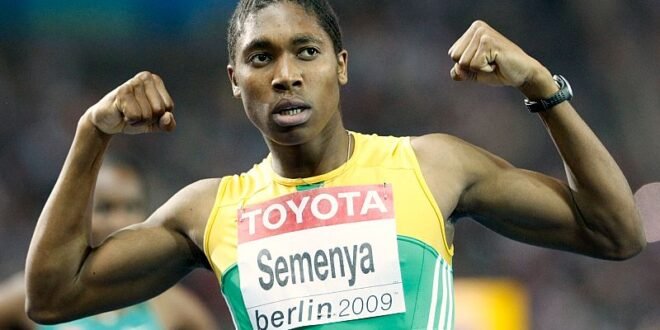The Legal Battle of Caster Semenya and the Future of Women’s Sports
The European Court of Human Rights (ECHR) is expected to deliver a landmark ruling this week that could reshape the landscape of women’s sports. The decision, made by the Grand Chamber — a panel of 17 judges handling the most significant cases — will determine whether Caster Semenya, one of the most celebrated athletes in track and field, was unfairly excluded from competition due to regulations on sex eligibility. This case has far-reaching implications not just for Semenya but for all female athletes who may face similar challenges.
A Long-Lasting Legal Struggle
Semenya’s journey began over a decade ago when she first rose to international prominence as a teenager. Her success in the 800 meters sparked immediate scrutiny, leading to mandatory sex tests. She was never transgender and was assigned female at birth, identifying as a woman throughout her life. However, she was born with differences of sex development (DSD), which resulted in naturally high testosterone levels — a factor that became central to the controversy.
In 2018, World Athletics introduced rules requiring athletes like Semenya to lower their testosterone through medication to compete in women’s events. These regulations were seen as a way to maintain fairness in competition. Semenya refused to take the medication, arguing that her testosterone was a natural part of her identity and genetic makeup. As a result, she was barred from competing in major events, effectively ending her career.
Her legal battle continued through various courts, including the Court of Arbitration for Sport and the Swiss Supreme Court, where she faced repeated setbacks. However, in 2023, the ECHR delivered a significant win for Semenya, stating that the rules had the potential to violate her rights. The court raised concerns about the lack of clarity surrounding the long-term effects of using hormone-suppressing medication.
Potential Outcomes and Their Implications
If the Grand Chamber upholds the 2023 decision, it would mark a major shift in how sports organizations handle sex eligibility. It could lead to the re-evaluation of current regulations and open the door for other athletes to challenge similar policies. However, even if the ruling favors Semenya, the changes may not be immediate. The case might be sent back for further review, potentially involving the Court of Arbitration for Sport again, which could take years to resolve.
On the other hand, if the Grand Chamber rules against Semenya, it would likely conclude her legal fight, as its decisions are final and cannot be appealed. This outcome would reinforce the existing rules and set a precedent for other sports organizations to follow.
Broader Impact on Sports and Society
Semenya’s case is more than just a legal dispute; it reflects a larger debate about gender, fairness, and human rights in sports. The issue has gained political attention, with figures such as former U.S. President Donald Trump weighing in on the future of women’s competition. The controversy has also sparked discussions in other sports, including swimming and boxing, which have implemented their own regulations regarding testosterone levels.
The International Olympic Committee (IOC) is under pressure to address these issues more directly. Under new president Kirsty Coventry, the IOC is considering taking a more active role in setting guidelines for sex eligibility, rather than leaving it to individual sports federations. This shift could lead to more standardized policies across different disciplines.
A Fight for Principle, Not Just Competition
Although Semenya no longer competes internationally, her legal battle continues. At 34, she has transitioned into coaching, but her focus has shifted from personal achievement to advocating for athlete rights. In recent interviews, she has emphasized that her fight is now about protecting the dignity and autonomy of athletes, regardless of their biological makeup.
“It’s a battle for human rights now,” she said. “It’s not about competing, it’s about putting athletes’ rights first. It’s about the protection of athletes.”
Conclusion
The upcoming ruling by the ECHR is more than just a verdict on one athlete’s case. It represents a pivotal moment in the ongoing conversation about fairness, identity, and the future of women’s sports. Whatever the outcome, the decision will shape how sports organizations approach sex eligibility and influence the rights of athletes for years to come.
 Info Malang Raya Its All About World News
Info Malang Raya Its All About World News



